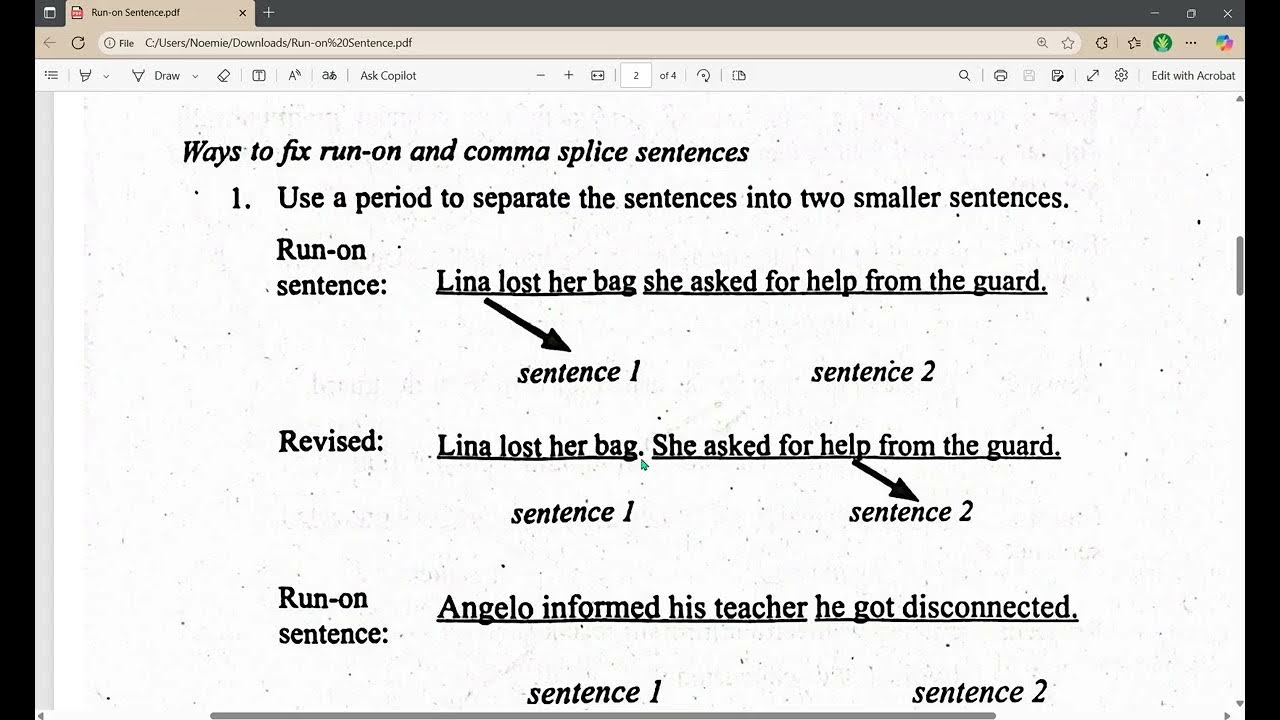Como Arborizar Frases Complexas?
Summary
TLDRThis educational video delves into the structure and analysis of complex sentences, focusing on coordinating and subordinating clauses. It demonstrates the process of breaking down sentences using tree diagrams (arborization), where each clause is identified as either independent or dependent. Key steps include recognizing syntactic constituents, distinguishing clause types, and visually representing sentence structures. Through detailed examples, viewers learn to analyze sentence syntax and arborize complex sentences with clarity, building a foundational understanding of syntactic analysis in grammar.
Takeaways
- 😀 The two main types of sentences are coordinated and subordinate, each with its distinct syntactic characteristics.
- 😀 Coordinated sentences are independent and do not have a syntactic dependency, while subordinate sentences are syntactically dependent.
- 😀 When analyzing complex sentences, start by identifying the number of clauses (independent or dependent) and their syntactic structure.
- 😀 The basic process for tree diagramming (arborization) involves separating independent clauses and analyzing each clause's syntactic constituents.
- 😀 Identifying the syntactic elements (noun phrases, verb phrases, etc.) in a sentence is crucial for accurate sentence tree construction.
- 😀 In coordinated sentences, conjunctions (like 'but' or 'and') link the clauses, with no syntactic hierarchy between them.
- 😀 For complex sentences with coordinated clauses, treat each clause as a simple sentence and connect them with a coordinating conjunction.
- 😀 Subordinate clauses can be categorized into different types (e.g., substantives, adverbial, relative), each playing a specific syntactic role in the sentence.
- 😀 A key step in analyzing subordinate clauses is recognizing their syntactic function (subject, direct object, complement, etc.) in relation to the main clause.
- 😀 In relative subordinate clauses, the dependent clause often acts as an adjective, providing more detail about the noun in the main clause.
- 😀 Temporal, causal, and conditional subordinate clauses help express various circumstances and relationships between actions, such as time, cause, and condition.
Q & A
What are the two main types of sentences discussed in the transcript?
-The two main types of sentences discussed are 'coordinated sentences' and 'subordinated sentences'.
What characterizes coordinated sentences?
-Coordinated sentences are independent and do not have syntactical dependence on each other. They are connected by coordinating conjunctions.
How can a complex sentence with coordinated clauses be represented in a tree structure?
-In a tree structure, coordinated sentences are represented as separate independent clauses. The only link between them is the coordinating conjunction.
What is the first step in arborizing a complex sentence?
-The first step is to identify how many independent clauses the sentence has and where each clause begins and ends.
How are the constituents identified in a sentence for tree structure?
-Constituents are identified by recognizing noun phrases (nominal phrases), verb phrases (verbal phrases), and other syntagmatic components. This helps in structuring them in the tree.
What does the conjunction 'but' signify in a coordinated sentence?
-'But' is a coordinating conjunction that creates a contrast between two independent clauses, indicating an adversative relationship.
What are the steps to arborizing a complex sentence with subordinated clauses?
-The first step is to identify whether the sentence has subordinated or coordinated clauses. Then, follow the same approach as for coordinated sentences, but recognize the syntactical dependency in subordinated clauses.
What is the role of subordinated sentences in a complex sentence?
-Subordinated sentences depend syntactically on the main clause, meaning they cannot stand alone and serve to add additional information or clarify the main sentence.
How can you identify a subordinated sentence in a tree structure?
-A subordinated sentence is linked to the main sentence via a subordinating conjunction and will not have the same level of syntactical independence. It is part of a larger syntactic structure, typically forming a single syntactic unit with the main clause.
What are the different types of subordinated sentences mentioned in the transcript?
-The transcript mentions subordinated sentences as either integrated, adverbial, or relative, with each serving different syntactic functions such as noun, adverbial, or adjective roles.
Outlines

This section is available to paid users only. Please upgrade to access this part.
Upgrade NowMindmap

This section is available to paid users only. Please upgrade to access this part.
Upgrade NowKeywords

This section is available to paid users only. Please upgrade to access this part.
Upgrade NowHighlights

This section is available to paid users only. Please upgrade to access this part.
Upgrade NowTranscripts

This section is available to paid users only. Please upgrade to access this part.
Upgrade NowBrowse More Related Video

Types of sentence structures | Simple, Compound, Complex & Compound-complex

4 Sentence Structures You Must Know | Easy Explanation | Learn with Examples

What Are Main and Subordinate Clauses? | KS2 English Concept for Kids

Conjunctions materi

IELTS - Conjunctions | Learn conjunctions to form complex sentences | One trick to master IELTS.

Run-on Sentence
5.0 / 5 (0 votes)